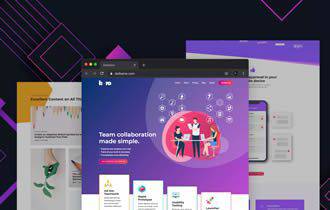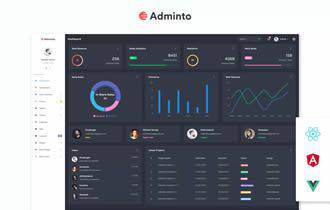Growth is among the most desirable goals for any web design business. Whether you’re a freelancer or an agency, it’s likely that you’ll want to become bigger and more profitable over time.
It takes a lot of planning and hard work to get there. And your business will continue to evolve all the while. Things such as pricing, workflow and ideal projects will change along with you.
One thing you may not expect with that growth is the continued pull of your legacy clients. Those who you’ve worked with for years and have long been a part of your journey.
For these folks, you’re not necessarily that big-time web designer. To them, you’re a trusted source of information and maybe even like a member of the family. You’re the person they call on year after year.
While that’s a great thing, it may also feel as though you’re stuck between the future and your past. These longtime clients may still expect things to work the way they always have, even if it doesn’t fit with your current business model.
So, how can you keep old friends happy while forging ahead? Here are some tips to help you manage.

2,000+ Templates

270+ Templates

150+ Templates

1,200+ Themes

550+ Plugins

8,200+ Templates
Determine a Client’s Place in Your Business
The first challenge is to look at what role a particular client plays in your business. For example, are they considered vital? If they left today, would your revenue suffer?
You might also think in terms of the services you provide them. Are they using a content management system (CMS) that you specialize in? Is their website outdated and difficult to maintain?
If the client in question fits seamlessly with what you’re doing, awesome! But even if they don’t, take a moment and consider what it would take for the relationship to change in a mutually-beneficial way.
Sometimes, this is the perfect segue into a redesign or some other shift in services. It brings your client in line with your preferred practices and may spark a renewed energy. This is also a great way to bring in some extra money.
A client/designer relationship can often stagnate simply because there’s not enough communication. This can quickly change with a little initiative on your part.
Of course, not everyone will take you up on the offer. But it can’t hurt to ask.

Adjust the Rules Where Necessary
The way you worked even a few years ago may be vastly different than today. For example, maybe you weren’t quite as busy back then. Thus, a client could email or call anytime with a request. Now, you’re so swamped that you have implemented a ticket system. If only everyone was on board.
These types of changes can be difficult for clients to grasp. Not because they necessarily want to be troublemakers. Rather, they’re likely so used to working with you in a certain way that policy changes don’t show up on their radar. They pick up the phone because that’s what they’ve always done.
For designers, the problem is that you end up different rules for different people. Maybe your most profitable client uses the ticket system, but the smallest insists on taking up more of your time. That’s not really fair to anyone.
Here’s where some gentle reminders can make a positive impact. The hope is that, once a client uses your new process a time or two, they’ll be comfortable enough to keep on doing so.
If they still don’t get the hint, well, you’ll have to make a decision. Is it worth a battle or do you just live with it? Only you can answer for certain.

Stick to Your Current Pricing Structure
The longer you have been in business, the more likely it is that your pricing structure will have changed. This will have the biggest impact on longtime clients, as they’ve gone through those different phases with you.
What? You haven’t raised prices on them? It’s understandable. Sometimes we allow clients to stick with older pricing as a way to say “thank you”. Or perhaps we don’t want to deal with the anticipated blowback for doing so.
Except in very special circumstances, it’s a bad idea to provide deep discounts or failing to raise rates accordingly. It’s not only tough on your bank account, but it can be mentally frustrating as well. You’ll likely dread any work from a client who is paying half or three-quarters the rate of all the rest.
This isn’t your client’s fault. They’re simply paying what you’re charging them. It’s ultimately up to you to ensure that everyone’s paying the current rate across the board.
In the end, this will help you maintain a healthy relationship. You’ll feel like you’re being compensated fairly and that your hard work is appreciated. And clients are usually willing to pay that extra premium for someone they can trust.

Should You Bring Longtime Clients Along for the Ride?
The reality is that, as your business changes, not every existing client is going to be a perfect fit for where you are right now. To paraphrase an old saying: you can’t fit a square peg into a round hole.
That’s why it’s important to look at each client’s status within your portfolio. It’s an opportunity to figure out which relationships are working, along with those that aren’t. From there, you can try and make improvements where possible.
Ultimately, some clients may not come along for the ride. That’s OK – it’s part of the natural evolution of a business.
Then again, you might be surprised at how flexible some clients are. With a little communication, they could be with you now and well into the future.
The post Your Web Design Business Has Grown: How Do You Manage Legacy Clients? appeared first on Speckyboy Design Magazine.